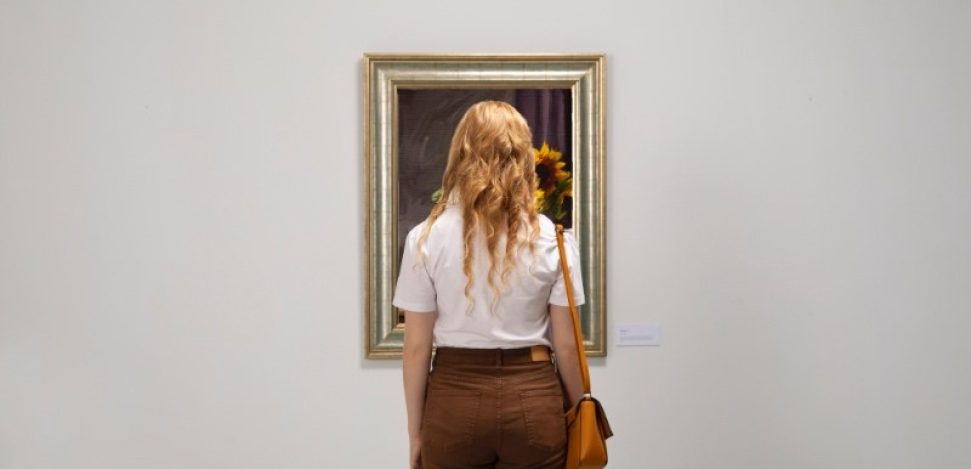Munich, a city steeped in rich cultural history, stands as a beacon for art enthusiasts from around the globe. Among its many cultural treasures is the Alte Pinakothek, a distinguished museum that commands attention for its extensive collection of ancient paintings.
What is Alte Pinakothek?
The Alte Pinakothek, situated in Munich’s Kunstareal area, is a renowned art museum that stands as one of the world’s oldest galleries. Its historical significance is rooted in its substantial collection of Old Master paintings. The name “Alte” Pinakothek aptly captures the essence of its collection, spanning from the fourteenth to the eighteenth century, encapsulating a rich tapestry of artistic expression during that period.
Distinct from its counterparts, the Neue Pinakothek, reconstructed in 1981, focuses on nineteenth-century art, while the Pinakothek der Moderne, inaugurated in 2002, specializes in exhibiting modern art.
These three galleries collectively form the Bavarian State Painting Collections, operating under the auspices of the Free State of Bavaria, and each plays a unique role in preserving and showcasing distinct epochs of artistic evolution.
CLASSIC REMISE: DISCOVER THIS CLASSIC CAR MUSEUM IN BERLIN
The Building
King Ludwig I of Bavaria, in 1826, commissioned Leo von Klenze to construct a new edifice to house the Wittelsbach collection, giving rise to what would become the Alte Pinakothek. At the time of its inception, this architectural marvel, featuring skylights strategically integrated into the cabinets, made it not only the largest museum globally but also a pioneering structure in both its structural and conceptual aspects.
Diverging from the prevalent castle-like museum designs of the early 19th century, the Neo-Renaissance exterior of the Pinakothek was a striking departure. Beyond its aesthetic appeal, this architectural choice was intricately linked with the museum’s function and overall structure. Its avant-garde design catapulted it into the realm of modernity, setting the standard for museum buildings not just in Germany but throughout Europe. The ripple effect of its influence can be seen in the subsequent construction of esteemed galleries, including the Hermitage Museum in Saint Petersburg, and others in Rome, Brussels, and Kassel.
The building faced a significant challenge during World War II, enduring severe damage from bombings. However, in a testament to its resilience and cultural significance, it was reconstructed and welcomed visitors once again on June 7, 1957. Director Ernst Buckner played a pivotal role in ensuring that the rebuilding process maintained the authenticity of the original architecture.
Despite the restoration efforts, certain aspects of the pre-war interior, such as the grand loggia on the upper floor facing the south façade, were left untouched. In 2008, a new chapter in the Alte Pinakothek’s aesthetic journey unfolded with the introduction of a wall covering crafted from woven and dyed silk from Lyon. The chosen color scheme of green and red drew inspiration from the original design dating back to the museum’s construction and persisted until the 20th century.
This commitment to tradition was not arbitrary. King Ludwig I and Leo von Klenze had already embraced the practice of alternating red and green wall coverings, echoing a tradition dating back to the late 16th century. This tradition, observed in major art galleries across Europe in cities like Florence, London, Madrid, St. Petersburg, Paris, and Vienna, served as a visual homage to the exhibition of old masters during that era. Thus, the Alte Pinakothek not only stands as a physical embodiment of artistic heritage but also as a living link to centuries of cultural continuity.
Alte Pinakothek: History
The inception of the Wittelsbach collection can be traced back to Duke Wilhelm IV (1508–1550), who kickstarted the endeavor by commissioning contemporary painters to craft several history paintings, including the notable “The Battle of Alexander at Issus” by Albrecht Altdorfer. The art collection expanded further under Elector Maximilian I (1597–1651), who, in 1616, enlisted Peter Paul Rubens for four hunt paintings and acquired numerous works, particularly those of Albrecht Dürer. Notably, he secured “The Four Apostles” in 1627, albeit with some pressure on the Nuremberg city fathers. Unfortunately, during the Thirty Years’ War, 21 paintings were confiscated and relocated to Sweden amid the occupation of Munich.
Maximilian’s grandson, Maximilian II Emanuel (1679–1726), continued to enrich the collection, focusing on Dutch and Flemish paintings during his tenure as the Governor of the Spanish Netherlands. However, financial constraints led to a halt in acquisitions under his successors. Parallelly, Maximilian’s cousin, Johann Wilhelm, Elector Palatine (1690–1716), added to the collection with a keen interest in Netherlandish paintings. Notable acquisitions included Peter Paul Rubens’ “The Big Last Judgment” and Raphael’s “Canigiani Holy Family.” Charles Theodore, Elector of Bavaria (1742–1799), further strengthened the collection with a preference for Netherlandish art, acquiring works like Rembrandt’s “The Holy Family.” By the late 18th century, a substantial number of paintings found a home in Schleissheim Palace, accessible to the public.
The reunification of Bavaria and the Electorate of the Palatinate in 1777 prompted the relocation of galleries from Mannheim, Düsseldorf, and Zweibrücken to Munich. This strategic move aimed to safeguard collections during the turbulent times following the French Revolution. Despite efforts, 72 paintings, including “The Battle of Alexander at Issus,” were seized by Napoleon’s forces in 1800 and found their way to the Louvre. Although some paintings were returned, many remained in French possession.
With secularization, artworks from churches and monasteries entered state hands. King Ludwig I of Bavaria played a pivotal role in collecting Early German, Early Dutch, and Italian Renaissance masterpieces. In 1827, he acquired the Boisserée collection, followed by the purchase of Prince Wallerstein’s collection in 1828. Johann Georg von Dillis issued the first catalog in 1838, marking a milestone. After King Ludwig I, acquisitions slowed down until 1875 when directors Franz von Reber and Hugo von Tschudi secured important additions, including Leonardo da Vinci‘s “Madonna of the Carnation” and El Greco’s “The Disrobing of Christ.”
Despite a predilection for certain painters, gaps in the collection were evident. Since the 1960s, the Pinakothek addressed these gaps, such as a deficit in 18th-century paintings by integrating works loaned from Bavarian banks, including Nicolas Lancret’s “The Bird Cage” and François Boucher’s “Madame Pompadour.”
The collection faced challenges, notably in 1988 when a serial vandal damaged three Albrecht Dürer paintings with acid, causing estimated damages of 35 million euros. The Pinakothek continued to evolve, acquiring Dierick Bouts’ “Ecce agnus dei” in 1990.
In 2014, the museum faced a request for the repatriation of Jacob Ochtervelt’s “Das Zitronenscheibchen” (The Lemon Slice), which was rejected. The museum asserted that the painting had been lawfully purchased at the time and that the Hagen family’s interest extended only to a security on the painting, not its repatriation.
URBAN NATION: FOR THE URBAN CONTEMPORARY ART LOVERS
Alte Pinakothek: Collection
The Alte Pinakothek, supervised by the Bavarian State Painting Collections, possesses an expansive array of European paintings spanning the 13th to 18th centuries. Particularly renowned is its collection of Early Italian, Old German, Old Dutch, and Flemish paintings, deemed among the world’s most significant.
Displayed at the Old Pinakothek are over 800 paintings; however, due to spatial constraints, associated galleries across Bavaria, including those in Schleissheim Palace and Neuburg Palace, showcase additional works by Old Masters. Notably, sections of the museum underwent sequential closures from 2014 to 2017 for renovations, rendering the artworks in those areas temporarily inaccessible.
The German paintings collection (14th–17th century) at the Alte Pinakothek stands as the most comprehensive worldwide, featuring masterpieces by artists like Albrecht Dürer, Cranach, and Holbein. The Early Netherlandish paintings (15th–16th century) exhibit exceptional works by van Eyck, Rogier van der Weyden, and Bosch. The Dutch paintings collection (17th–18th century) showcases exquisite pieces by Rembrandt, Hals, and Ruisdael, reflecting the passion of the Wittelsbach rulers.
MONSTERKABINETT: A COLLECTION OF ROBOTIC CREATURES
In the Flemish paintings collection (16th–18th century), masterpieces by artists like Rubens, Brueghel, and van Dyck are on display, with the Rubens Collection, boasting 72 paintings, being the largest permanent collection globally.
The Italian paintings collection (13th–18th century) includes renowned works from the Italian Gothic era to the Baroque period, featuring artists such as Giotto, Fra Angelico, Raphael, and Leonardo da Vinci’s “Madonna of the Carnation.” The French paintings section (16th–18th century) is the second smallest, including works by Claude Lorrain and François Boucher, reflecting the Wittelsbachs’ connection to France.
The Spanish paintings collection (16th–18th century) is the smallest but includes major works by El Greco, Velázquez, and Murillo. Notably, Francisco de Goya’s paintings are housed in the New Pinakothek. Each section contributes to the rich tapestry of art at the Alte Pinakothek.





 smokingpaper
smokingpaper



























